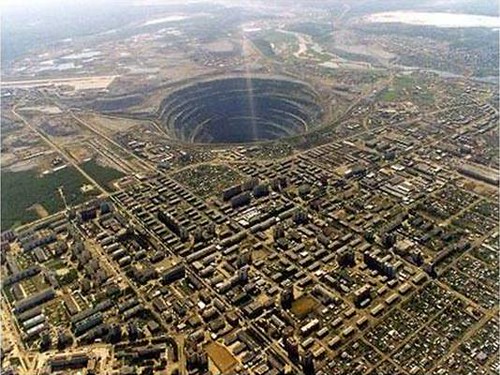Said by some to be the biggest moving machine build by humans. It is the bucket wheel excavator "Bagger 288" built by Krupp in Germany in 1978.
This machine (300 metres long, weight: 45,500 tons) is capable of moving on its treads to the various open-air mine locations.
The last such transition happened in 2001, when it crawled from one mine to the other - across 22 kilometers of fields, roads, railway crossings, villages and countryside... As it could not go around the obstacles, it headed in a straight line, so the workers prepared the way by piling up sand cushions on top of highways and train tracks, removing power-lines and seeding the fields with special grass to make its progress smoother.
It took them 3 weeks to move it.
It even caught a bulldozer




However there is a bigger machine.
The name of that epic structure is Overburden Conveyor Bridge F60 in Lichterfeld. This is 502 metres long, 202 metres wide, 80 metres high and weighs 11,000 tonnes. It was build in East Germany in 1991 by VEB TAKRAF Lauchhammer. After only 13 months of operation it was taken out of operation for energy-political reasons. The opencast mine at Klettwitz-Nord where the conveyor bridge was operating is closed. The bridge is owned now by the community and presented as the "Lying Eiffel Tower"


Here is a big hole, not dug by Bagger 288, in Siberia, one of the biggest man-made holes on Earth. This is a diamond mine near the town Mirny. It is 525 meters deep and 1.25 km in diameter.
